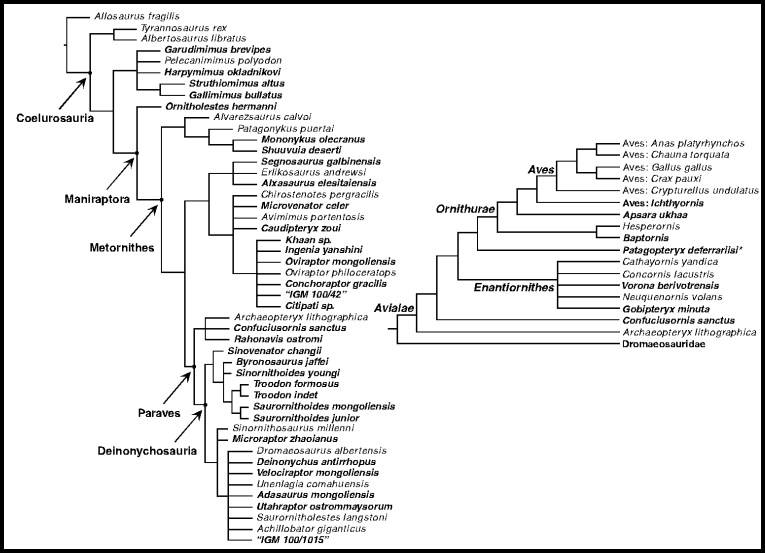OUR APPROACH (METHODS and MATERIALS) |
||||
|
Introduction |
The questions and hypotheses outlined in the introduction being tested through the quantified assessments of life-history parameters derived from osteohistological and phylogenetic (evolutionary) analyses. I. SPECIMEN SELECTION |
|||
 |
||||
| Figure 2b. Cladograms for Coelurosauria (left; Xu et al., in press) and Avialae (right; Norell and Clarke, 2001). Taxa for proposed analysis are highlighted in bold, those to be taken from the literature are denoted by *. These taxa were chosen through consensus of several phylogenetic hypotheses for coelurosaurian dinosaurs (Gauthier, 1986; Sereno, 1999; Norell et al., in press; Xu et al., in press). All agree that deinonychosaurians (dromaeosaurs + troodontids) are the sister taxon to Avialae. Oviraptosaurs, alverasaurs, and ornithomimids are more distantly related. Some additional taxa listed in Table 1 for histological analysis are not depicted in these published trees, Microraptor and Vorona however have been added for this graphic. (left; Xu et al., in press) and Avialae (right; Norell and Clarke, 2001). Taxa for proposed analysis are highlighted in bold, those to be taken from the literature are denoted by *. These taxa were chosen through consensus of several phylogenetic hypotheses for coelurosaurian dinosaurs (Gauthier, 1986; Sereno, 1999; Norell et al., in press; Xu et al., in press). All agree that deinonychosaurians (dromaeosaurs + troodontids) are the sister taxon to Avialae. Oviraptosaurs, alverasaurs, and ornithomimids are more distantly related. Some additional taxa listed in Table 1 for histological analysis are not depicted in these published trees, Microraptor and Vorona however have been added for this graphic. | ||||
|
Next: Histological
Analysis
|
||||